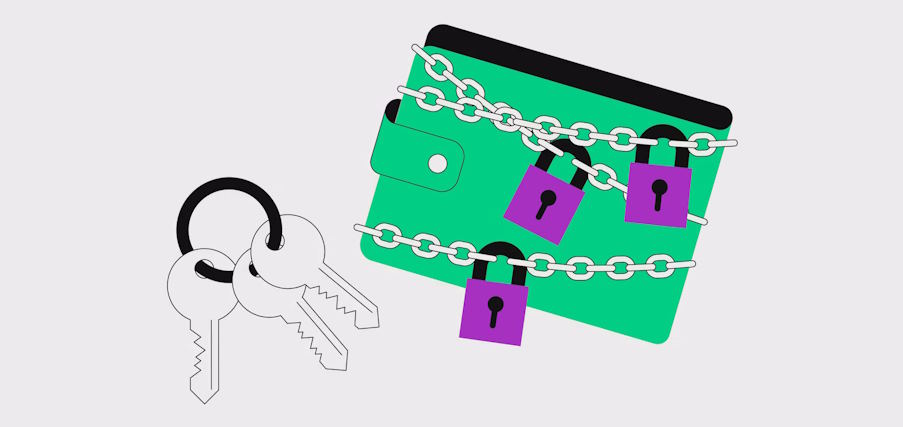In the digital age, where cryptocurrencies and digital assets have become increasingly valuable and prevalent, ensuring their security has become paramount. With the rise of cyber threats and the potential for financial loss, it is crucial to adopt robust security measures. This article delves into the world of cold wallets and multi-signature authentication, two powerful tools that can significantly enhance the protection of digital assets.
Strengthening Security Measures with Cold Wallets and Multi-Signature Authentication
The combined power of cold wallets and multi-signature authentication
When it comes to protecting digital assets, the combined power of cold wallets and multi-signature authentication can create a formidable defense against potential threats. Cold wallets provide an offline storage solution, keeping private keys and sensitive information away from online vulnerabilities. By storing digital assets in a secure offline environment, cold wallets significantly reduce the risk of unauthorized access and hacking attempts.
How cold wallets and multi-signature authentication complement each other
While cold wallets offer a robust storage solution, multi-signature authentication adds an extra layer of security by requiring multiple signatures to authorize transactions. With multi-signature authentication, a transaction can only be executed if a predetermined number of authorized parties provide their signatures. This system prevents a single point of failure and makes it incredibly challenging for hackers to gain control over digital assets.

Increased protection against common security threats, such as hacking and phishing
By utilizing cold wallets and multi-signature authentication, users can effectively mitigate common security threats. Hacking attempts and phishing attacks often target online wallets and exploit vulnerabilities in single-signature authorization methods. However, with the offline storage provided by cold wallets and the multi-signature requirement, the likelihood of falling victim to such attacks is significantly reduced.
Real-life examples of successful security implementations using cold wallets and multi-signature authentication
Several notable examples highlight the success of implementing cold wallets and multi-signature authentication. For instance, major cryptocurrency exchanges have adopted multi-signature wallets for their operational funds, ensuring that no single individual has complete control over the assets. Additionally, blockchain projects and decentralized applications have utilized multi-signature authentication to protect user funds and enhance overall security.
Best Practices for Implementing Cold Wallets and Multi-Signature Authentication
Choosing the right cold wallet and understanding its features
 Selecting the right cold wallet is the first crucial step in implementing a secure storage solution for digital assets. It is essential to research and choose a reputable cold wallet provider that offers robust security features and a user-friendly interface. Consider factors such as the wallet’s compatibility with various cryptocurrencies, encryption methods, backup and recovery options, and firmware updates. Understanding the features and limitations of the chosen cold wallet ensures that it aligns with your specific needs and provides the necessary security measures.
Selecting the right cold wallet is the first crucial step in implementing a secure storage solution for digital assets. It is essential to research and choose a reputable cold wallet provider that offers robust security features and a user-friendly interface. Consider factors such as the wallet’s compatibility with various cryptocurrencies, encryption methods, backup and recovery options, and firmware updates. Understanding the features and limitations of the chosen cold wallet ensures that it aligns with your specific needs and provides the necessary security measures.
Setting up and managing a cold wallet effectively
Proper setup and ongoing management of a cold wallet are vital for maintaining its security. When setting up a cold wallet, follow the manufacturer’s instructions carefully, including generating a strong, unique passphrase and enabling additional security features such as two-factor authentication. Regularly update the wallet’s firmware to ensure it remains resistant to potential vulnerabilities. Additionally, keep a backup of the wallet’s recovery phrase or private keys in a secure offline location to safeguard against loss or theft.
Selecting the appropriate multi-signature scheme for specific needs
When implementing multi-signature authentication, it is crucial to choose the right scheme based on your specific requirements. Evaluate factors such as the number of signatures required, the parties involved, and the level of flexibility needed for transactions. Some schemes may involve multiple individuals, while others may utilize hardware devices or smart contracts. By carefully considering these factors, you can implement a multi-signature setup that aligns with your security needs and operational workflows.
Educating users and key stakeholders on best security practices
Implementing cold wallets and multi-signature authentication is not solely about technology but also about fostering a culture of security. It is essential to educate users and key stakeholders on best security practices. This includes raising awareness about the importance of safeguarding private keys, avoiding suspicious links and phishing attempts, and regularly updating software and firmware. Training sessions, security guidelines, and continuous communication can empower users to become active participants in securing digital assets.
